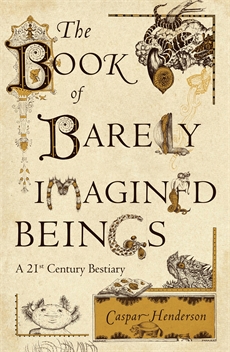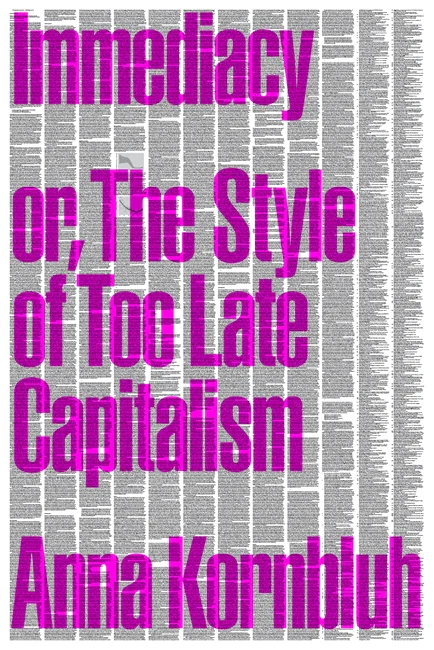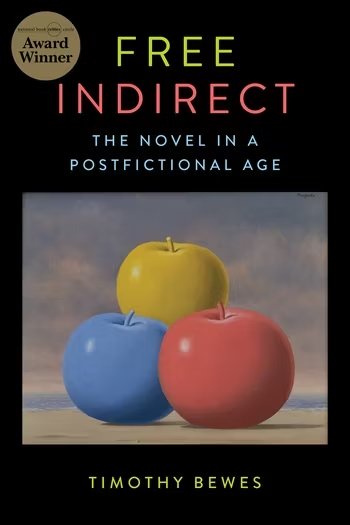As recently as the 1990s, nature writing was a reasonably stable genre. Mostly an American and English form, it drew its inspiration from a tradition of pastoral literature and the rejection of the material world Thoreau enacted when he walked his mile and a half to Walden Pond almost 170 years ago. Of course, like most genres, it was considerably more various than this sort of narrow characterisation can allow. To describe a poet such as Ted Hughes as a ‘nature writer’ is to do violence to the hard-won, transformative intent of his work and thought. Yet there is no doubt we can learn as much about the meaning of the landscape and the quicksilver movement of animal consciousness from his poetry as we can from the luminous writing of Barry Lopez or Peter Matthiessen. Conversely, there is as much poetry in the scientific writing of E.O. Wilson or Richard Mabey as there is in Annie Dillard or Aldo Leopold.
In recent years, the genre has undergone a radical transformation. Its boundaries have expanded and once relatively homogenous forms and conventions have been discarded in favour of a new heterogeneity. Sometimes dubbed the new nature writing, the best of this work approaches its subject in original and often startling ways, drawing upon innovations that have enlivened memoir and non-fiction more generally in recent years. More importantly though, it is gripped by a new urgency, a sense that to write about nature in the twenty-first century is a political act. The reasons for this are simple. Human consumption, the sheer weight of our numbers and lifestyle, have pushed the planet’s ecosystems to breaking point. Climate change, deforestation, habitat loss, rising sea temperatures, rising marine acidity, pollution and other factors are combining in ways that will irrevocably alter life on Earth.
The exact nature of this transformation is difficult to predict: some, like the biologist E.O. Wilson, argue that without radical change we can expect 50 percent of the world’s species to be extinct by the end of this century; others predict runaway climate change will lead to the collapse of most of the ocean’s ecosystems and render large parts of the planet uninhabitable. What is beyond doubt is that we are entering a new phase in the planet’s history, one in which human activity is a driving force, an epoch some call the Anthropocene, others the Eremozoic, or the Era of Loneliness.
In such a context, it is clear that any notion of a new nature writing will be as much writing about a new nature as new writing about nature. This is reflected in the ongoing attempt to understand landscapes and systems transformed or ravaged by human activity in the way Tim Dee does in his recent (and wholly remarkable) Four Fields (2013), a study of four spaces of open land that ranges from the grasslands of Zambia – or what Dee describes as the ‘pre-farm field’ inhabited by the Masai Mara – to the entirely constructed landscape of the English Fens and the ecologically denuded Montana prairie, to a stretch of poisoned land outside Chernobyl.
As in Four Fields, much of the point of this writing lies in its detection of absences, its registering of the silences created by human activity. Certainly, it is no accident that so many contemporary nature writers are deeply influenced by W.G. Sebald, or that Sebald’s novel, The Rings of Saturn (1995), might be read as one of the foundational texts of the new nature writing. Yet despite its preoccupation with loss and erasure, and what Philip Hoare has described as ‘the terminal moraine of memory’, its purpose is not merely elegiac. Instead, it prompts us to rethink our relationship with the natural world, to find new accommodations. In contrast to much older nature writing – and perhaps ironically given its emphasis upon the local – it is also a literature of globalisation, informed and shaped by the connectivity and mobility that underpin the cultures of the twenty-first century. Its journeys are not just metaphorical, they are physical and temporal, crossing borders and moving seamlessly between different continents and different times. Nor are its hybridisations merely formal: they reflect a world in which migration and technology are transforming cultures and our experience of the world as surely as they are landscapes.
It is difficult to imagine a work that more perfectly embodies this transformation than Caspar Henderson’s magnificent Book of Barely Imagined Beings, a book that takes the bestiaries of the Middle Ages and uses them as the model for an attempt to tease out the way animals (and the ways we choose to think about them) are integral to our understanding of ourselves and our place in the world. In his introduction, Henderson says the book’s inspiration lay in an encounter with Jorge Luis Borges’ compendium of puzzling and fantastical creatures, Manual de zoología fantástica, or The Book of Imaginary Beings (1957), populated by creatures such as the Strong Toad, which has a shell like a turtle, glows in the dark like a firefly, and possesses a stare so powerful it repels all viewers; and the Bahamut, a fish so enormous the human mind cannot comprehend or withstand the sight of it. Reading Borges’ book, Henderson says, he found himself struck by the thought that, however strange the creatures in this bestiary of the imagination, the real world contains many as strange or stranger, creatures rendered alien not just by their natures, but by our fragmentary understanding of them and their worlds.
In a superficial sense, Henderson’s book is an attempt to bridge this gap, a series of ‘explorations and sketches’ of 27 animals that together might form a twenty-first century bestiary. Yet it is also much more than that. For as Henderson points out in his introduction, medieval bestiaries were not simply the expression of the strangeness of the medieval mind; they are part of a far older tradition, one in which the imagining of animals, in both their otherness and their similarity, helps us imagine ourselves and understand our place in the world.
Some of the creatures Henderson chooses for this purpose are familiar: the Dolphin, for instance, or the Octopus. Others, such as the Waterbear, a phylum of tiny water-dwelling animals that have adapted to such extremes of temperature and pressure that they can survive for extended periods in outer space, and Barrel Sponges, which grow so large divers can clamber inside them, are less so. Still others, such as the Venus’ Girdle, a member of the Ctenophora, a phylum of jellyfish-like creatures that propel themselves through the ocean with rows of tiny cilia, and the Genital-Fingered Stomatopod (Gonodactylus smithii), a species of mantis shrimp capable of striking its prey with enough force to break an unwary diver’s arm, are frankly bizarre.
Henderson’s aim is to do more than simply define and describe these creatures. Each provides the jumping-off point for an extended series of reflections inspired by the animal in question. These reflections move fluidly and with often exhilarating effect through a dizzying array of subjects, leapfrogging effortlessly from zoology to poetry, history to popular culture, geology to mythology. Their prismatic effect is intensified by the addition of many dozens of hyperlinked notes in the margins, each containing nuggets of further information tangentially connected to the main text and (presumably intentionally) offering a pleasing echo of Borges’ famous infinite library.
At least part of the pleasure of these meditations is the sheer density of information. How could one not thrill to the knowledge that modern nautiluses have 28 or 29 laminations in each chamber of their shells, a number that corresponds with the length of the lunar-tidal month? Or that this number decreases as one moves further back through the fossil record, so that by the time one reaches the early Palaeozoic, Nautiloid fossils have only eight or nine laminations in each chamber, thus offering a concrete memory of a time when the Moon was much closer to the Earth and the lunar month barely longer than a week? Or that honey badgers (creatures whose thoroughgoing unpleasantness stands in stark contrast to the delightful associations their name conjures up) have been observed biting the testicles off their rivals? Or that dolphins have been observed teasing pufferfish until they expand so they can use them as balls in a dolphin version of water polo? Or that until 2000 or 3000 years ago carp and sturgeon more than two metres long and weighing more than a tonne were not uncommon in Asian and European rivers?
One of the distinguishing characteristics of much contemporary nature writing is the degree to which it eschews unitary narrative. Recent books, such as Philip Hoare’s spiralling exploration of the ocean and its meanings, The Sea Inside (2013), have tended to be digressive and oblique, their power depending upon the primacy of observation and the accumulation of the particular. They have frequently taken the form of essays unified by a central metaphor, as in Robert MacFarlane’s recent book about pathways ancient and modern, The Old Ways (2012) – a tendency that reaches a sort of logical conclusion in the American writer Amy Leach’s collection of brief reflections, Things That Are (2012).
There is something significant in this tendency, a sense in which it reflects the deeper sense of loss that moves beneath most contemporary nature writing. To emphasise the particular is to preserve it from the conflagration that surrounds us, to observe and record is to bear witness to what was and may soon be no longer. But it is not simply about bearing witness. Instead, it is possible to discern a larger desire to emphasise the multiplicity of the world as it exists over the elegant abstractions of theory. In this context, Henderson’s choice of the bestiary as a model seems even more inspired. To the contemporary reader medieval bestiaries often seem gloriously bizarre, catalogues of creatures both real and imaginary described in terms that ricochet seemingly at random from the acutely observed to the fanciful. For every nugget of factual information about the habits of migratory birds there are a dozen about ibexes using their horns to break their falls when they leap from mountain tops and wholly imaginary creatures such as the Hydrus, a serpent that kills crocodiles by coating itself in mud and sliding down their throats.
Yet to focus on the strangeness of the creatures that inhabit medieval bestiaries is, in many ways, to miss the point. Medieval bestiaries were not scientific documents, but religious ones. The creatures they contain are thick with allegorical and symbolic meaning. In such a context, the truth about a creature’s habits or even existence matters less than its capacity to provide moral instruction.
Unlike his medieval counterparts, Henderson is constrained by the limits of scientific knowledge. Yet he rightly refuses to see this as a limitation. In one of the book’s more striking images, he describes the way in which ‘over their roughly 335 million years of existence ammonites “explored” the boundaries of size and shape, mapping large parts of the morphological space available to any entity that grows by accretion’; something similar might be said of the way nature explores the constraints of scientific possibility, or, to borrow as Henderson does from Robert Pogue Harrison, ‘imagination discovers its real freedom in the measured finitude of what is the case.’
Perhaps not surprisingly, what emerges from this process of imaginative engagement is both liberating and distressing. Time and again Henderson undercuts a reminder of the complexity and interconnectedness and sheer wonder of life with a reminder of the devastating effects of human activity. Writing about hearing seal song for the first time in the Arctic archipelago of Svalbard, he finds himself struck first by its beauty, then by the way this solitary seal’s cry really betokens the absence of the many hundreds of whale and seal songs that would once have filled these waters. Similarly, in his chapter on the Right Whale (so named because it was rich in oil, didn’t fight and floated after death, thus making it the right whale to kill), he surveys not just the almost inconceivable scale of the slaughter of these gentle creatures, but the somehow even more heartbreaking fact that Grey Whales, also once killed in their tens of thousands by humans, have in recent years begun to approach humans in the Gulf of California, seeking, it seems, to communicate with us.
Despite the grief that shadows such moments, The Book of Barely Imagined Beings is not a despairing book. Presumably this is partly temperamental: just as the book itself eschews the hushed solemnity of much nature writing in favour of a playful lightness of touch Henderson repeatedly emerges as a buoyant, ebullient presence. But it is also, I suspect, deliberate. Although he does not go quite so far as to speak of the audacity of hope, it is no accident the book begins and ends with an anecdote about his daughter, or that its final pages juxtapose a diagram depicting the immensity of geological time and the sign carried by one of the Occupy protestors that declared ‘The Beginning is Nigh’.
It is also significant, I suspect, that the book returns so often to music, both as metaphor and lived phenomenon. Writing about the Babenzle, a Pygmy tribe in the Congo whose polyrhythmic and polyphonic music is almost incomprehensible to those acculturated to Western musical traditions, Henderson draws upon the work of the anthropologist Jerome Lewis, who suggests our confusion lies in a failure to understand the world the Banezle inhabit, a world that is filled with the overlapping cries and calls of birds and animals, sounds their music echoes and embodies. As Lewis remarks, ‘what they are really interested in … are synergies: technologies of enchantment, where you lose yourself and become aware of a greater community.’
This might, of course, be a description of the essentially musical method of this brilliant, beautiful and often profound book, of the way its meanings emerge from the interplay between its many pieces. But it is also a reminder of the fact that re-imagining ourselves as part of a larger, interconnected world allows us to understand our own existence more fully, a point made manifest when Henderson writes:
Seen swimming underwater a fully grown Leatherback [Turtle] is … like a great rock. It looms towards you, a solid concentration of mass amid the shifting water and light, drawing your attention as surely as gravity before it passes effortlessly and at speed to merge again with the blue. The experience resembles consciousness itself: a passing show that lends dimension to the present moment.







